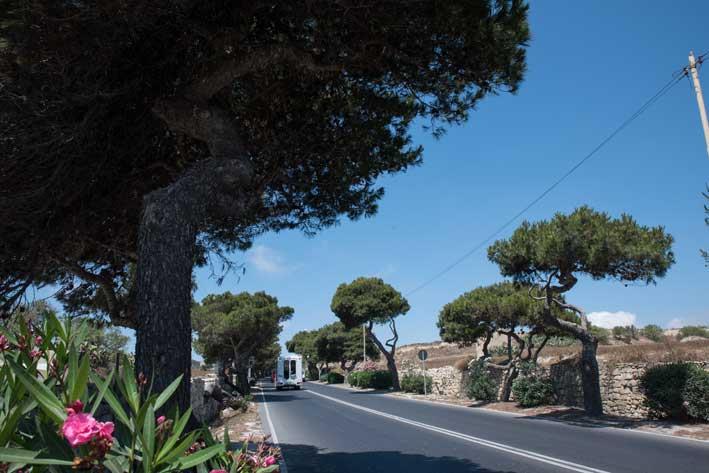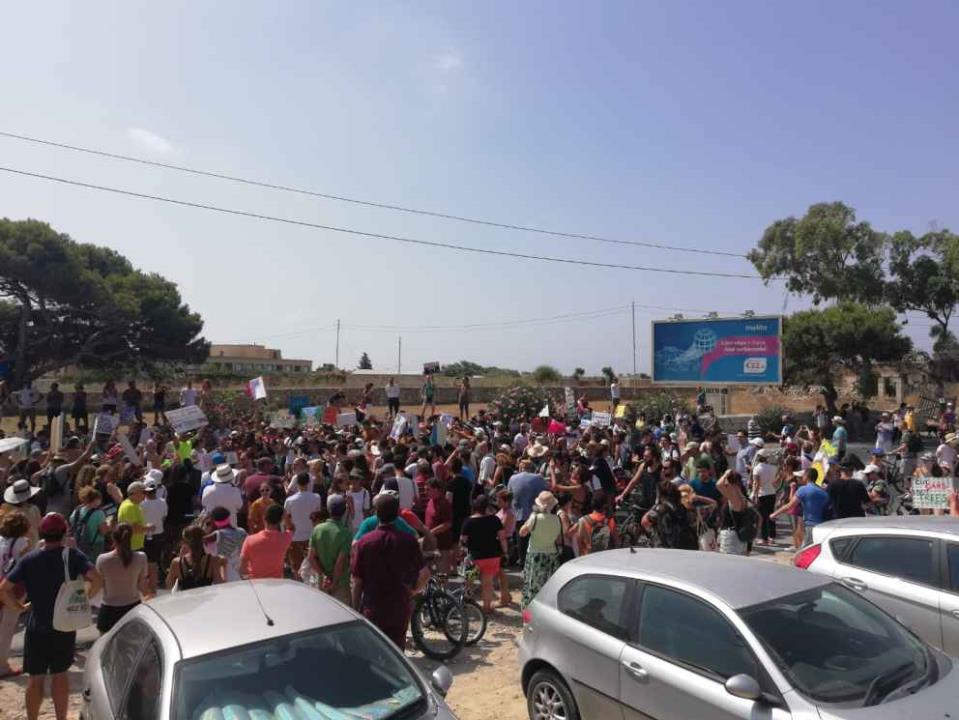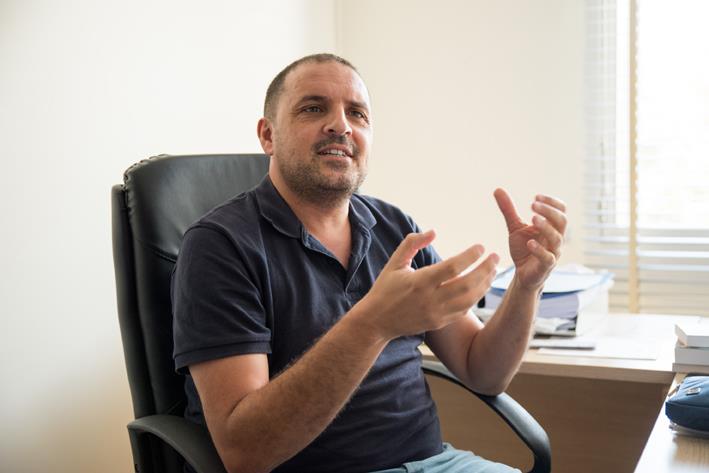“The ‘For Our Trees’ protest was very different to any other protest in Malta; it simply started out as a Facebook page,” says sociologist and University of Malta lecturer Dr Michael Briguglio.
Over the past few weeks, the discussion on everybody’s lips has been the environment and protests – specifically tree protests. Halfway through the year, Malta has already witnessed a number of protests against construction, fuel stations and, most recently, environmental destruction.
Last Sunday, thousands gathered in Attard, with protestors tying themselves to trees, waving placards and even cleaning up areas of Mdina Road. These people gathered to demonstrate against the uprooting of trees as part of the Central Link project, which will see over 500 trees uprooted and some 49,000 square metres of agricultural land developed.
But what made this protest different from others which had taken place earlier this year?
Simply that the protest ‘For Our Trees’ started off as a Facebook page, organised by 19-year-old Sasha Vella. In the span of just a few days, thousands joined the page and organised the protest. Just yesterday, the same teenage activists who organised the ‘For Our Trees’ protest, placed black crosses on the stumps of trees chopped down in Santa Luċija, were 295 trees are being felled to make way for underground tunnels. The teenagers explained that the crosses symbolise not only protest, but what is happening to the environment. “It symbolises a cemetery,” explained Sasha.
These teenage activists have faced insults and discouragement but the question is: why are young people organising protests? Climate change is not a new concern, so why are so many young people now taking matters into their own?
The Malta Independent on Sunday met Dr Briguglio to explore why young people are making themselves heard and what role technology plays in empowering social movements.

A new and refreshing stance
“It is very refreshing to see young people, who often have no political or activist backgrounds, come together, organise themselves and protest,” explained Briguglio. “We are seeing this wave not just on a national scale, but also abroad. Still, it is very satisfying to see it happening in Maltese society; that young people are gathering hundreds of people to stand up together.” Briguglio explains that there are three important factors as to why youth activists have come together.
“Firstly, the environment is no longer a side issue, but a mainstream one, especially among young people.” He remembers how back when he was 20 years old and part of Moviment Graffitti, whenever they spoke about the environment, they were portrayed as ‘tree huggers’. “Ultimately, there has been a cultural shift in people’s perspective of the environment. We are witnessing trees being chopped down, more pollution, people with respiratory conditions and climate change. The environment has become a bread-and-butter issue; we are living these problems.”

Technology empowers young people to be protagonists of their time more than ever before
Social media has brought about numerous opportunities for young people and activists to produce their own media. People are no longer consumers of media, but ‘prosumers’.
“The protest truly began with the creation of a Facebook page,” said Briguglio. “Back in the 1990s, Moviment Graffitti had to fax news organisations in the hope it would capture the attention of some journalists.” He goes on to say that social media has helped empower social movement activists.

Co-existence between politics and activism is necessary
Briguglio highlighted that more and more people are disillusioned by political parties, big or small – and with good reason. “People are not happy with the political situation, and it is good to see people taking matters into their own hands, but we must also keep in mind that it is the politicians in parliament who can change policies.” He says that both politicians and grass-root activists – although may have conflicting interests – need one another. Politicians need the people’s votes, while activists need politicians to change legislation. “Now whether politicians actually amend legislation because civil society leaves them no other choice is a different matter, but the fact is that both need to co-exist. Although they might not want to, it is necessary.”
Sensitising people’s awareness and bringing about change
Apart from his own research, Briguglio has been involved in civil society, politics and activism since the 1990s, and highlights that while it is refreshing to see new faces standing together to protest, one must also reflect on whether the movement will be sustained and effective.
“In my years of research and activism, I have never seen so much sentiment for trees. Sociologically, this is called sensitisation, where people are becoming more aware of the issues at stake.” He says that in the case of the environment, trees have become a symbol of the environment crying out for someone to speak on its behalf, and that is what we are seeing today.
“While I am happy to see this growing sentiment, it is important that we do not confuse this with what we refer to as substantive impacts; when you actually change something. We already see that there is going to be an appeal on the Central Link project, and we need to highlight that protesting to raise awareness of the environment is not the same as halting a project.”
He goes on to say that there have been a number of instances in the recent past of substantive impacts. “In 1999, we had the ‘Front against the Golf Course’, which eventually succeeded in stopping the development of a golf course the size of Sliema on agricultural land in Rabat. We forged an alliance with over 30 organisations, and politicians from different political parties came together and we managed to stop the development.”
He also says that just 15 years ago, no one would have imagined Malta would legalise same-sex marriage. “Again, the LGBT lobby formed an alliance which was strong enough to bring concession; and the same happened with the divorce referendum.” He highlighted that such substantive impacts usually revolve around broad alliances. “It is important that when someone believes in the issues you are fighting for, you put aside their background and stand together.

Not all youths have to protest to bring about substantive impacts
“I believe many are becoming more aware of civil society issues, and at times we have comments saying that these movements should team up and become one big movement, which I disagree with.” He believes that it is healthy to have different voices which find means to team up for change. “For example, NGOs, politicians and activists teamed up against the db Group’s project.” He also states that the environment is to remain a big issue which people are more inclined to speak up about.
“Of course, not all young people are inclined or ready to go out and protest. Some people protest in other ways; they use glass bottles, make particular life choices which reduce their impact on the environment. This is not a sign of apathy – far from it.” He says that, previously, one would always see the same faces at protests, but young people are now joining in and this represents change. “I’m a firm believer in protesting. I was not at the Central Link protest because I wanted there to be more new faces, and it was such a creative and fantastic move, showing us that change is coming.”